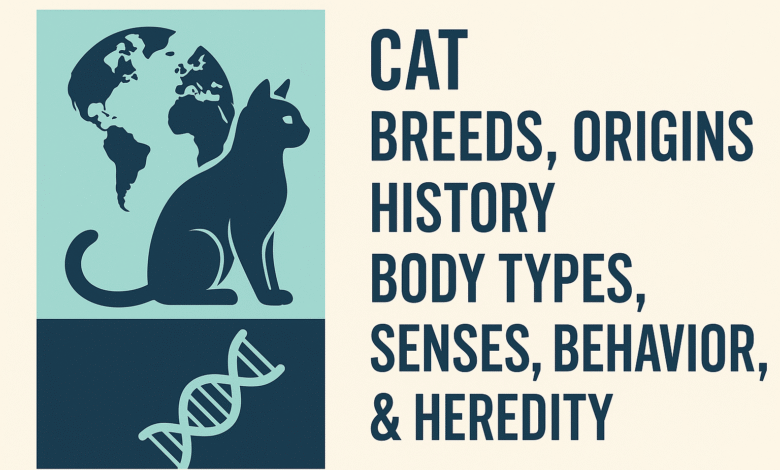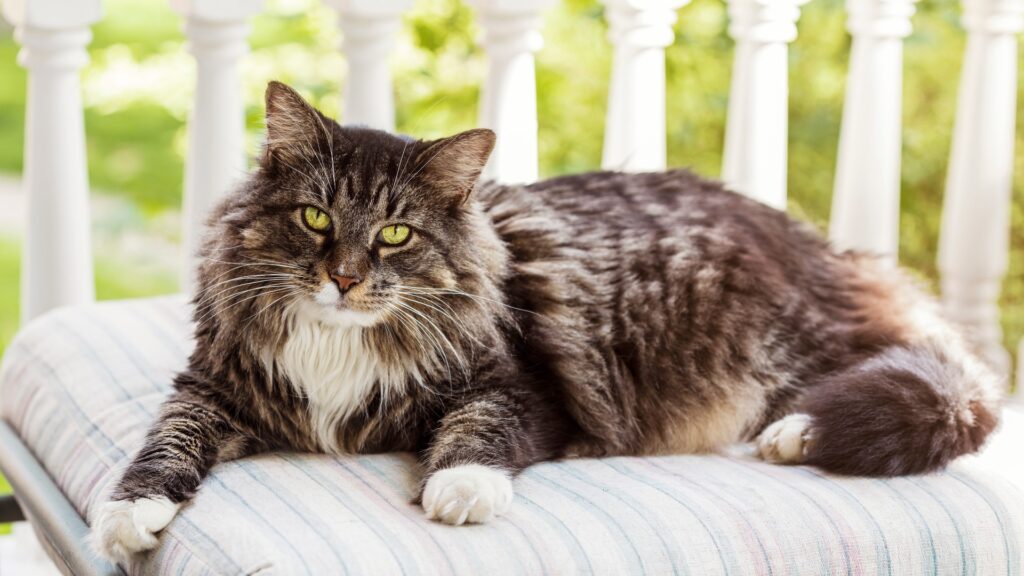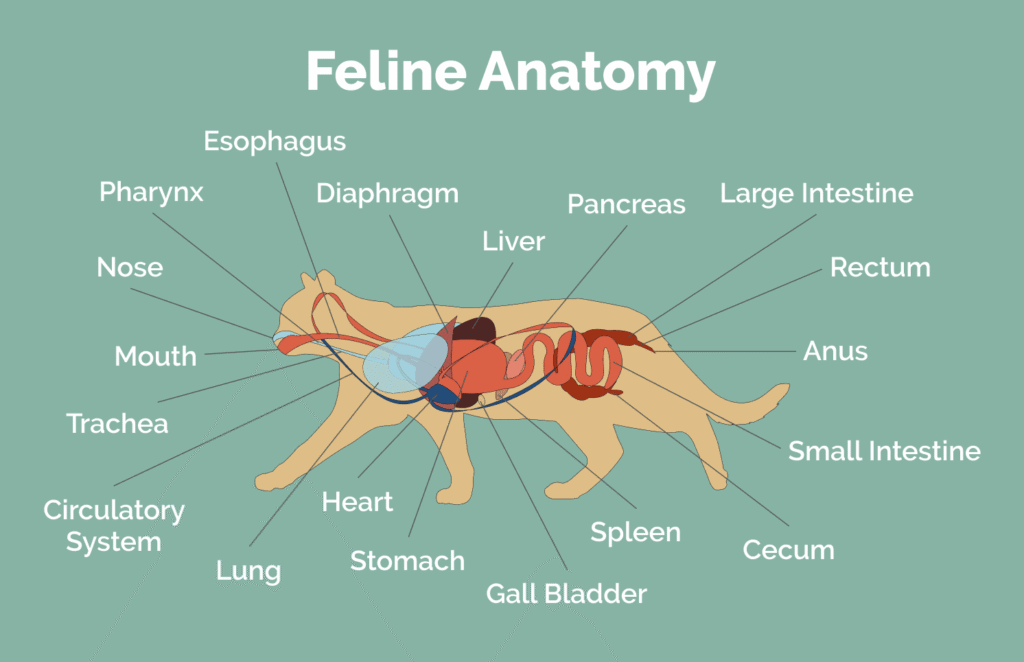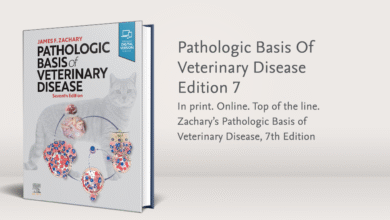
Species
Female cat called Queen
Male cat called Tom
Origin and history of cats
After the nonavian dinosaurs became extinct, mammals became the dominant life forms. The first felinelike mammal, Proailurus, evolved about 30 million years ago. It is thought that all true cat species evolved from this small civetlike predator.
Cats that resemble today’s felids first appeared in the early Pliocene Epoch (5.3 to 3.6 million years ago), and they have continued into present times with remarkably few changes. The original design of fang and claw, flexible backbone, muscular strength, and agility allowed felids to survive and adapt to the changes brought by each new era. Adaptations have occurred with changes in prey, but the basic body type has stayed the same.
The earliest known association between cats and humans likely dates to the origins of agriculture in the Middle East, about 15,000–10,000 years ago. Although the animal was certainly a source of meat and pelts, a partnership of sorts eventually developed between humans and cats, one based on mutual need. When humans gave up living as hunter-gatherers and began relying on agriculture, cats were attracted to the rodents feeding on crops and stored grain. Humans needed their grain protected from rodents, and cats needed a ready food source.

Cats held special status in ancient Egypt, where they evolved from useful predators protecting granaries from rodents to revered symbols of divinity. They were cherished pets, seen as divine protectors—in this life and the afterlife—and talismans of good fortune whose bodies may even be inhabited by gods. Cat cults and the temple worship of cats arose.
A cat breed is a group of related felines that share a conformation, meaning a similar physical appearance, or a common geographic region of origin. As cats spread around the world, pockets of cats adjusted to their unique environments and passed on their adaptations to their offspring. For example, such breeds as the Siberian and Norwegian Forest Cat developed long dense coats to protect themselves from the harsh winters in Russia and Norway. Recent genetic studies have helped determine the origins of some of the oldest recognized breeds. In general, the world’s domestic cats (pedigreed and random-bred) come from four areas: Asia, western Europe, East Africa, and the Mediterranean basin.
Physical Characteristics
- Size: Small, typically weighing between 6–16 pounds (2.7–7.3 kg).
- Fur: Variety of lengths (short, medium, or long); colors and patterns vary widely.
- Eyes: Excellent night vision; eye colors include green, yellow, blue, and more.
- Teeth & Claws: Sharp claws (usually retractable) and teeth adapted for hunting.
- Whiskers: Highly sensitive, help with navigation and spatial awareness.
- Tail: Used for balance and communication.
Behavioral Characteristics
- Independent but Social: Cats can be affectionate but often enjoy solitude.
- Territorial: Tend to mark and defend their space.
- Playful and Curious: Especially as kittens; enjoy stalking, pouncing, and exploring.
- Nocturnal Tendencies: More active during dawn and dusk (crepuscular behavior).
- Grooming: Spend a lot of time grooming to stay clean.
- Vocalizations: Meow, purr, hiss, growl—each has a different meaning or purpose.
Body parts of cat

Senses
Cats, like humans, have five senses. But there is also a popular belief that domestic cats have a sixth sense—the ability to find their way home over long distances.
Touch
Hearing
Taste
Smell
Vision
Cats’ “sixth sense”
Although experts doubt the existence of this “sixth sense,” many anecdotal accounts contend that cats have an unidentified sense that allows them to find their way home, sometimes over distances of hundreds of miles. No one knows how cats accomplish this feat, but theories abound, including that cats use Earth’s magnetic fields to negotiate their way back to familiar territory.
Behavior
Cats are often considered aloof or unaffectionate, but that is a misunderstanding of their nature. They are solitary hunters but are nevertheless social animals. As long as they are not competing for limited food resources, they can form close-knit groups that are usually composed of the mother cat and her kittens and related females. Unneutered males roam, sometimes widely, seeking out mating opportunities.
A breeding female (queen) can come into heat as many as five times a year. Domestic cats are induced ovulators, which means that ovulation does not occur until the queen mates. This efficient system vastly increases the chances that a cat will conceive, which is one of the reasons for cat overpopulation.
The gestation period is about 65 days.
Kittens are born blind, deaf, and helpless; their senses begin to function about 10 days after birth. Kittens at birth may lack distinctive coloring. For example, Siamese kittens are white at birth and begin to develop the characteristic “points” (distinct dark areas) at about three weeks.
Nutritional status
Cats, being obligate carnivores, have specific nutritional needs that primarily revolve around high protein, moderate fat, and minimal carbohydrates. They require essential amino acids like taurine, which is vital for heart health and vision, and arginine, which are not found in plant-based proteins. Vitamins, minerals, and fatty acids are also crucial for a cat’s overall well-being.
- High Protein:Cats need a higher protein intake than dogs, as protein is essential for their growth, maintenance, and repair of tissues.
- Moderate Fat:Fat provides energy and helps with the absorption of fat-soluble vitamins.
- Minimal Carbohydrates:Cats’ digestive systems are not adapted to efficiently process large amounts of carbohydrates.
- Essential Amino Acids:Taurine and arginine are crucial and must be obtained from animal-based sources.
- Vitamins and Minerals:Cats require a variety of vitamins (like Vitamin A, D, E, K, and B vitamins) and minerals (like calcium, phosphorus, and others) to support various bodily functions.


